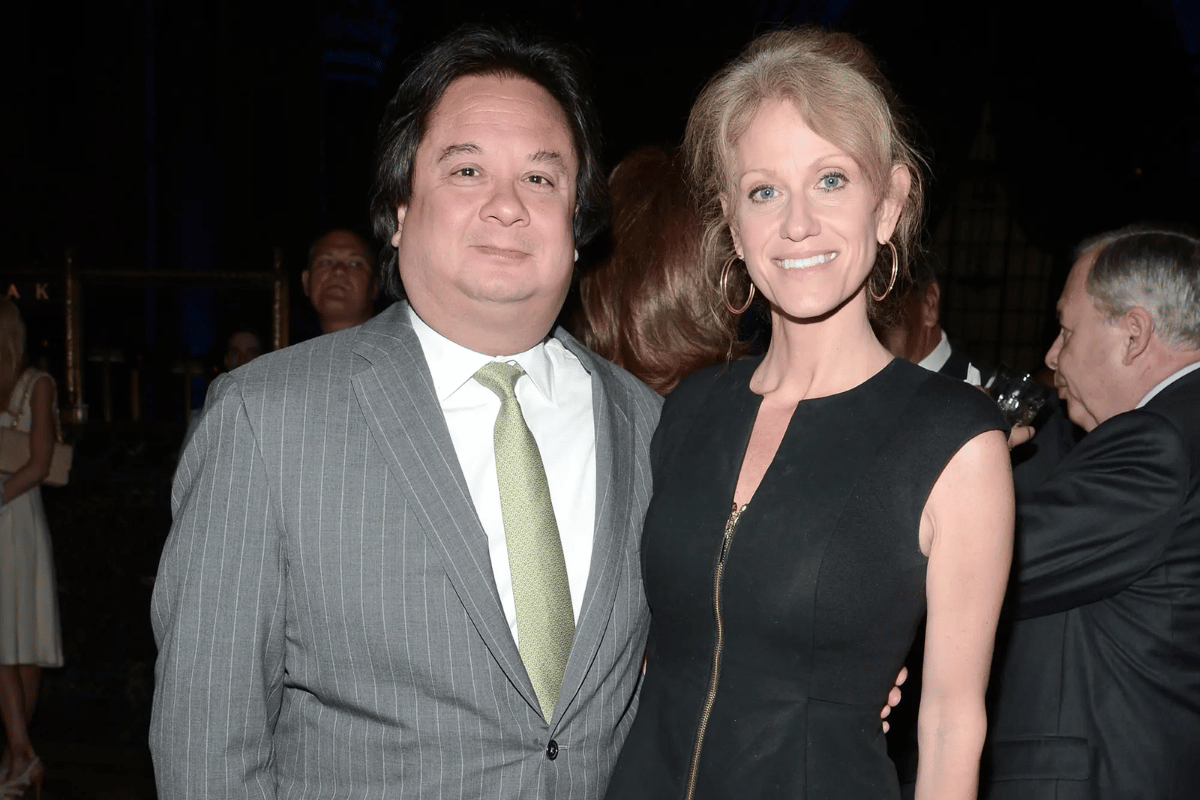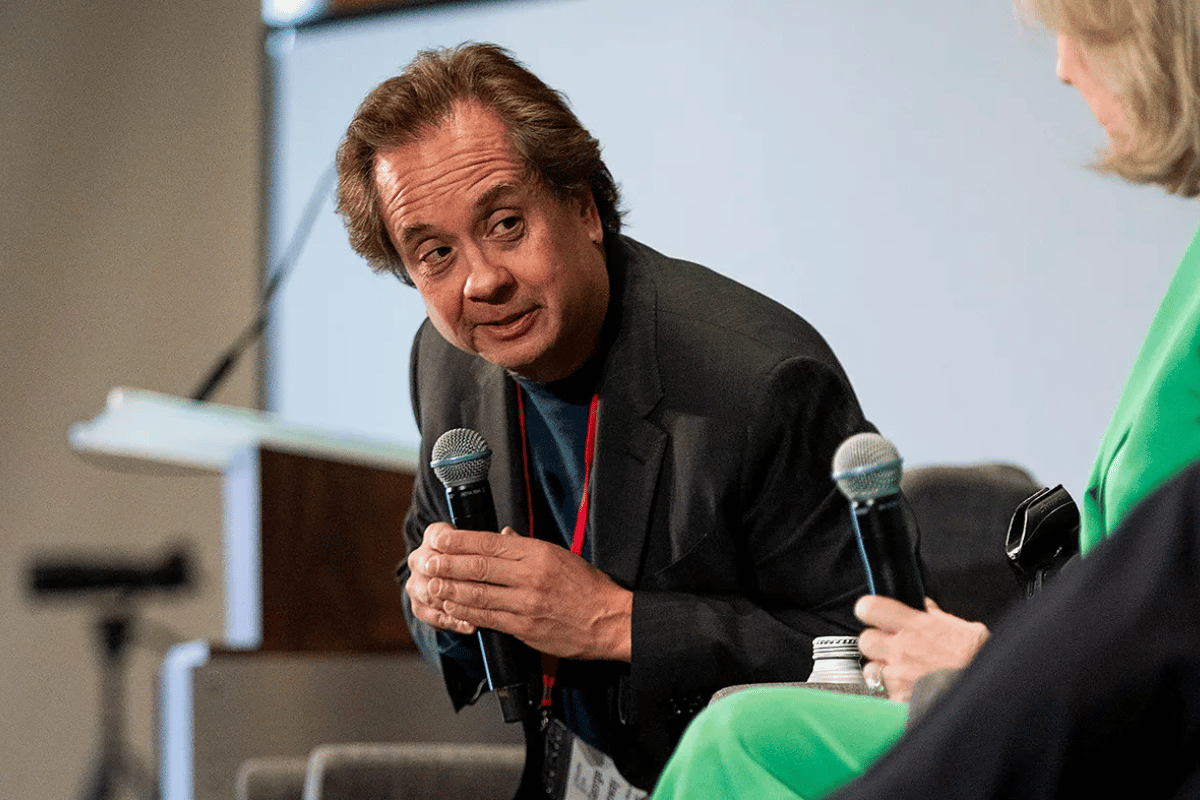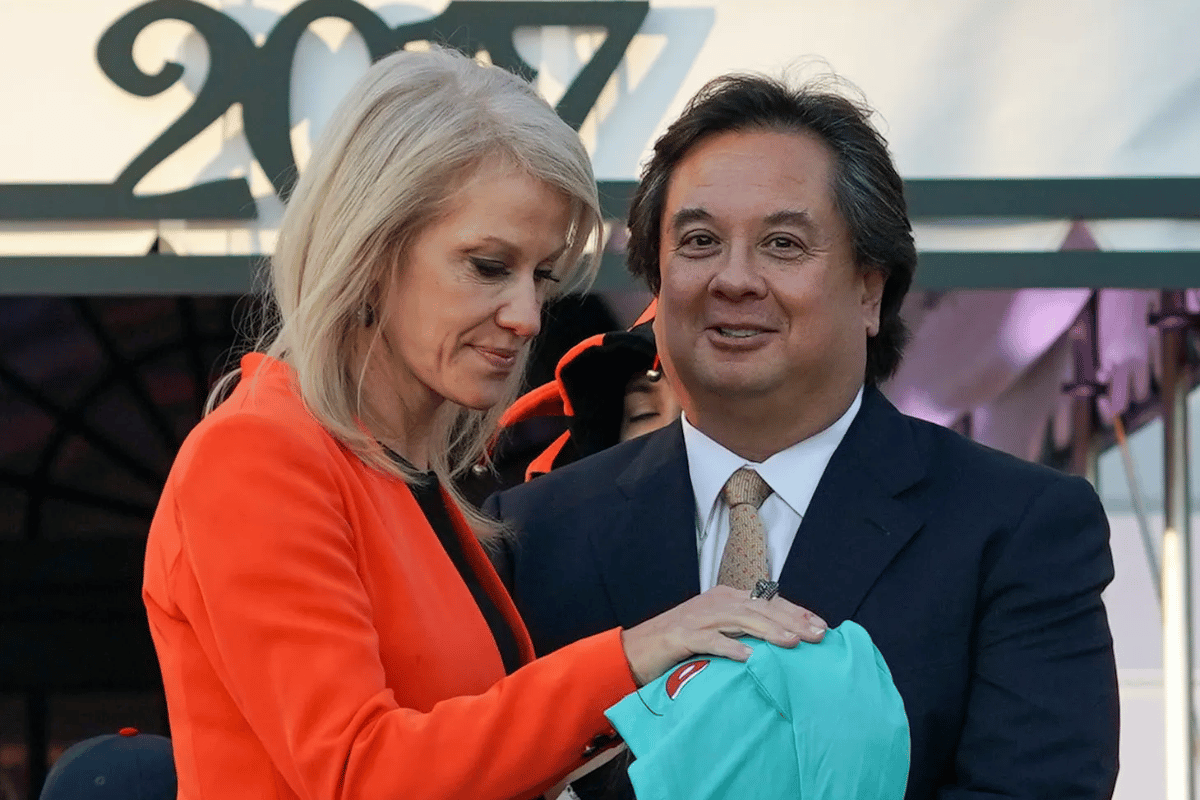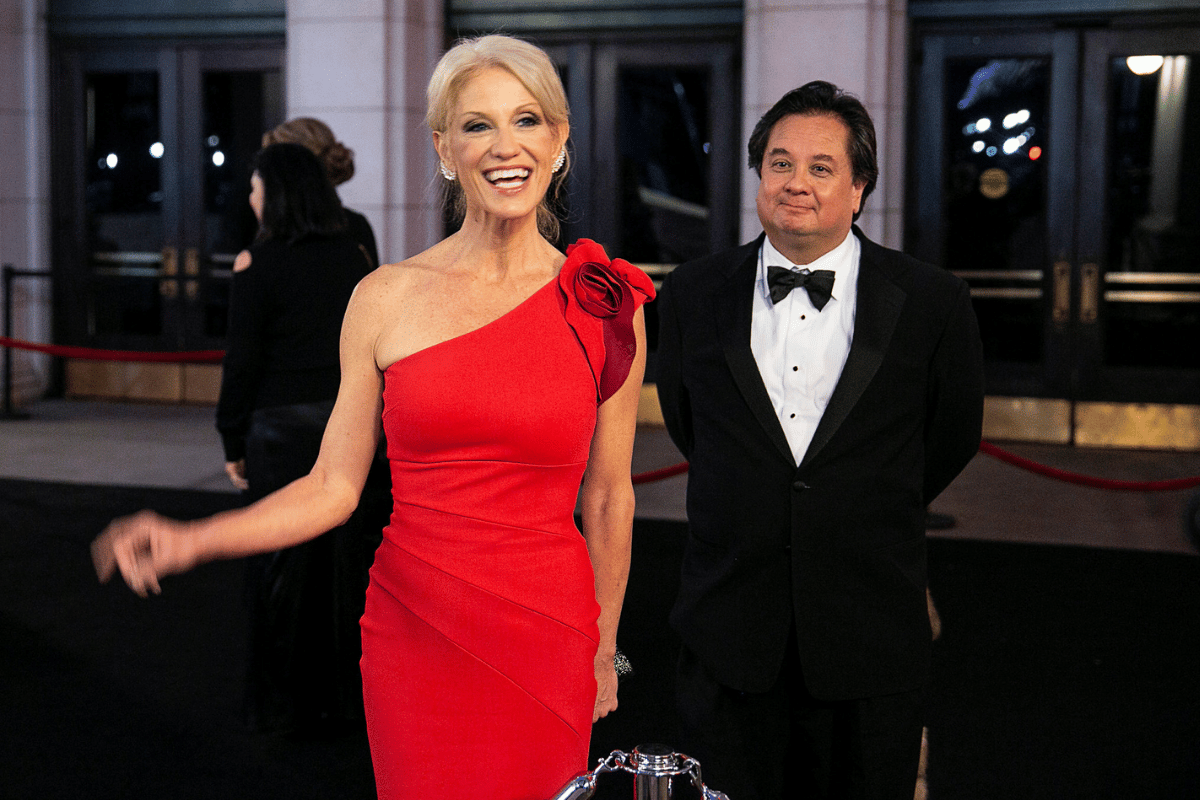George Conway’s weight loss journey is not just a personal transformation; it serves as an inspiring example for many seeking to improve their health in Winter 2024. Known for his prominent role in political discourse, Conway’s commitment to fitness and well-being reflects a deep personal resolve that goes beyond public perception.
In recent months, Conway has made headlines not only for his views but also for the impressive changes he has made to his lifestyle. By sharing his journey, he hopes to motivate others who may be struggling with their own weight loss challenges. This article will outline the seven essential steps that contributed to Conway’s success, providing a roadmap for readers looking to embark on their own weight loss journeys. From understanding the motivation behind the change to celebrating success and maintaining new habits, each step is designed to offer practical insights and actionable strategies for achieving lasting results.
george conway weight loss
As we delve into Conway’s experience, it becomes clear that his journey encompasses more than just physical changes; it embodies a holistic approach to health that includes mental well-being, social support, and the importance of setting realistic goals.
Understanding the Motivation
George Conway’s weight loss journey began with a profound personal motivation rooted in health and well-being. Like many individuals, Conway recognized the importance of maintaining a healthy weight not just for aesthetics, but for overall quality of life. He faced health concerns that prompted him to reevaluate his lifestyle choices. Studies show that weight-related health issues can lead to serious long-term consequences, including diabetes and cardiovascular disease, which were significant factors in his decision to make a change.
Conway’s commitment was fueled by the desire to set a positive example, particularly for his family. Family health history often plays a crucial role in motivating individuals to pursue a healthier lifestyle. As a public figure, Conway understood that his actions could inspire others, amplifying the impact of his transformation. “When you lead by example, you empower others to follow,” said health expert Dr. Michael Greger, emphasizing the importance of modeling healthy behaviors.
Another motivating factor for Conway was the mental clarity and emotional stability that often accompany a healthy lifestyle. Research indicates that regular physical activity and proper nutrition can improve mood and reduce anxiety. By focusing on weight loss, Conway aimed not only for physical changes but also for improved mental health, which can significantly enhance one’s overall quality of life.

Moreover, Conway found that self-improvement is a continuous journey. The desire for personal growth often leads individuals to seek new challenges. For Conway, committing to a weight loss plan was about embracing a new lifestyle that included better nutrition and regular exercise. This perspective aligns with psychologist Carol Dweck’s theory of a growth mindset, which promotes the belief that abilities and intelligence can be developed through dedication and hard work.
In addition to personal motivations, Conway’s public persona played a role in his transformation. He recognized the scrutiny that comes with being in the public eye and wanted to project an image of health and vitality. This public accountability can serve as a powerful motivator, pushing individuals to remain committed to their goals. As Dr. John Ratey, a psychiatrist and author, notes, “When you align your personal goals with public accountability, you create a stronger commitment to your objectives.”
Ultimately, understanding the motivations behind George Conway’s weight loss reveals a multifaceted approach to health that encompasses physical, mental, and social dimensions. His journey reflects the belief that true transformation is not just about losing weight, but about enhancing one’s entire life experience. By identifying and harnessing these motivations, Conway set the stage for sustainable changes that extend far beyond the scale.
Step 1: Setting Realistic Goals
George Conway’s weight loss journey emphasizes the critical importance of setting realistic and achievable goals. Establishing clear targets is fundamental to any successful weight loss plan. Research shows that individuals who set specific, measurable, achievable, relevant, and time-bound (SMART) goals are more likely to succeed in their efforts. Conway began by defining what he wanted to accomplish, focusing not just on the number of pounds to lose, but also on improving his overall health and fitness.
One of the first steps Conway took was to assess his current lifestyle and identify areas for improvement. This self-assessment helped him set practical goals that aligned with his long-term vision. For instance, instead of aiming for an unrealistic weight target within a short period, he opted for a gradual approach that emphasized steady progress. Health experts often advise that a safe and sustainable rate of weight loss is about one to two pounds per week, which is easier to maintain over time.
Conway also broke his larger goals into smaller, manageable milestones. This strategy not only made the journey less overwhelming but also allowed him to celebrate small victories along the way. Each milestone achieved—whether it was hitting a certain weight, completing a specific workout routine, or making healthier food choices—provided motivation to continue. Celebrating these achievements reinforces positive behavior and builds confidence, as noted by psychologist Dr. Barbara Fredrickson, who emphasizes the power of positive reinforcement.
In addition to weight-related goals, Conway set objectives related to his exercise routine. He recognized that incorporating regular physical activity was essential for both losing weight and maintaining a healthy lifestyle. By setting a realistic schedule that included various types of workouts, such as cardio and strength training, he was able to create a balanced routine that kept him engaged and motivated. According to the American Heart Association, adults should aim for at least 150 minutes of moderate-intensity aerobic activity each week, which can be easily broken down into manageable sessions.
Another important aspect of goal-setting for Conway was ensuring that his targets were flexible. Life can be unpredictable, and it’s crucial to adapt goals as circumstances change. By allowing himself some leeway, Conway was able to navigate challenges without feeling discouraged. This adaptability is vital for long-term success, as Dr. Heidi Grant Halvorson points out: “Success isn’t just about getting it right; it’s also about learning to adjust when things don’t go as planned.”
Lastly, Conway kept a journal to track his progress, which proved invaluable for maintaining focus on his goals. Writing down his targets, daily achievements, and any setbacks provided insights into what worked and what didn’t. Research supports the idea that self-monitoring can enhance weight loss success, as it encourages accountability and reflection on one’s journey. By regularly reviewing his goals and progress, Conway was able to stay committed to his plan and adjust strategies as needed.
In conclusion, the first step in George Conway’s weight loss journey involved setting realistic and achievable goals. By breaking down larger objectives, celebrating milestones, maintaining flexibility, and utilizing self-monitoring techniques, he laid a strong foundation for his transformation. This strategic approach not only made the journey manageable but also created a sustainable path toward a healthier lifestyle.
Step 2: Embracing a Balanced Diet
George Conway’s weight loss journey heavily relied on embracing a balanced diet. Recognizing that nutrition plays a crucial role in achieving health goals, Conway made significant changes to what he ate. He understood that the quality of food consumed directly impacts overall health, energy levels, and, ultimately, weight loss success.
One of the first changes Conway implemented was incorporating more whole foods into his diet. Whole foods, such as fruits, vegetables, whole grains, and lean proteins, are packed with essential nutrients that not only promote weight loss but also improve overall well-being. As nutritionist Dr. David Katz often states, “The best way to lose weight and keep it off is to eat real food.” By focusing on whole foods, Conway ensured that he was nourishing his body while reducing empty calories from processed foods.

In addition to choosing whole foods, Conway adopted portion control as a key strategy. Overeating healthy foods can still lead to weight gain, so being mindful of portion sizes was essential. He used measuring tools and visual cues, like using smaller plates, to help manage his servings. Research suggests that individuals who practice portion control are more successful in maintaining their weight loss over time, making this a critical component of his dietary approach.
Conway also made a point to stay hydrated, understanding the importance of water in a healthy diet. Drinking plenty of water not only aids in digestion but also helps control hunger and boost metabolism. Nutrition experts recommend drinking water before meals to help reduce overall calorie intake. By keeping a water bottle handy throughout the day, Conway made hydration a priority, which contributed to his overall health and weight loss goals.
Another significant dietary change was reducing sugar and refined carbohydrate intake. These types of foods can lead to rapid spikes in blood sugar levels, often resulting in increased cravings and overeating. Instead, Conway focused on complex carbohydrates, such as quinoa and brown rice, which provide sustained energy and are more satisfying. As Dr. Mark Hyman, a renowned functional medicine expert, points out, “Eliminating added sugars is one of the best things you can do for your health and your waistline.”
Finally, meal planning became a crucial aspect of Conway’s approach to nutrition. By preparing meals in advance, he was able to avoid unhealthy last-minute choices and ensure he had healthy options readily available. This proactive strategy is supported by research, indicating that those who plan their meals tend to have better dietary habits and experience greater success with weight loss. Conway’s commitment to meal planning allowed him to stay on track with his nutritional goals and maintain consistency in his diet.
In summary, George Conway’s weight loss journey highlights the importance of embracing a balanced diet. By incorporating whole foods, practicing portion control, staying hydrated, reducing sugar intake, and planning meals, he created a sustainable nutritional framework that supported his overall health and fitness goals. This holistic approach to diet not only facilitated his weight loss but also fostered a healthier lifestyle that he continues to prioritize.
Step 3: Incorporating Regular Exercise
George Conway’s weight loss journey also significantly benefited from incorporating regular exercise into his routine. Understanding that physical activity is vital for both achieving and maintaining a healthy weight, Conway made it a priority in his daily life. Exercise not only helps burn calories but also boosts metabolism, improves mood, and enhances overall health.
To start, Conway focused on finding activities he enjoyed, making it easier to stick with his fitness plan. Research shows that individuals who engage in exercises they find enjoyable are more likely to adhere to their routines long-term. Whether it was cycling, jogging, or participating in fitness classes, Conway sought out varied workouts to keep things interesting and engaging.
Additionally, he set a consistent schedule for his workouts, aiming for at least 150 minutes of moderate-intensity aerobic activity each week. This guideline aligns with recommendations from health organizations, which suggest that regular cardiovascular exercise is crucial for weight loss and overall fitness. By establishing a routine that included activities such as brisk walking or swimming, Conway ensured that he remained active throughout the week.
Strength training also played a vital role in Conway’s exercise regimen. By incorporating weightlifting or resistance training into his routine, he was able to build muscle, which is essential for boosting metabolism. According to fitness experts, having more muscle mass increases the number of calories burned at rest, making strength training a crucial component of any weight loss plan. Conway dedicated specific days to focus on strength workouts, ensuring a balanced approach to fitness.

Another key element of Conway’s strategy was to include flexibility and balance exercises, such as yoga or Pilates. These types of workouts not only improve physical function but also reduce the risk of injury, particularly as one ages. Flexibility exercises can enhance recovery after more intense workouts, making it easier to stay committed to a regular exercise routine. As Dr. Deepak Chopra often states, “Flexibility in the body is closely tied to flexibility in the mind.”
Conway also embraced the idea of being active throughout the day, not just during formal workouts. Small changes, like taking the stairs instead of the elevator or walking during phone calls, helped him incorporate more movement into his daily life. This concept aligns with the idea of “non-exercise activity thermogenesis” (NEAT), which refers to the calories burned through non-exercise movements. Research shows that increasing NEAT can significantly contribute to weight loss and overall health.
Lastly, Conway recognized the importance of rest and recovery in his fitness journey. Adequate sleep and recovery time are essential for muscle repair and overall health. He made a conscious effort to get enough rest, understanding that recovery plays a significant role in achieving fitness goals. Health experts emphasize that without proper recovery, the body can become fatigued, leading to decreased performance and increased risk of injury.
In conclusion, George Conway’s weight loss journey underscores the importance of incorporating regular exercise as a fundamental aspect of achieving health goals. By engaging in enjoyable activities, maintaining a consistent schedule, integrating strength and flexibility training, and promoting active living throughout the day, he established a well-rounded fitness routine that supported his overall well-being. This commitment to exercise not only facilitated his weight loss but also fostered a healthier, more active lifestyle.
Step 4: Focusing on Mental Health
George Conway’s weight loss journey highlights the essential role that mental health plays in achieving and maintaining health goals. Recognizing that the mind and body are interconnected, Conway prioritized mental well-being as a foundational aspect of his transformation. Research has shown that mental health significantly influences motivation, self-discipline, and the ability to cope with setbacks during the weight loss process.
One of the key strategies Conway employed was practicing mindfulness and self-awareness. By incorporating mindfulness techniques such as meditation and deep breathing exercises, he learned to manage stress and stay present in the moment. Mental health professionals often emphasize the benefits of mindfulness, stating that it can help individuals develop a more positive relationship with food and body image. This practice enabled Conway to better understand his emotional triggers and avoid unhealthy eating patterns.
Additionally, Conway sought to cultivate a positive mindset throughout his weight loss journey. He surrounded himself with motivational quotes and affirmations that reinforced his commitment to his goals. Studies suggest that maintaining a positive outlook can enhance resilience and improve overall well-being, making it easier to navigate challenges. As motivational speaker Tony Robbins asserts, “The quality of your life is determined by the quality of your thoughts.” This principle guided Conway as he focused on positive self-talk and visualizing his success.
Another important aspect of Conway’s approach was setting aside time for self-care. He understood that taking care of his mental health required intentional effort. Engaging in activities he enjoyed, such as reading, spending time with loved ones, and pursuing hobbies, provided a much-needed balance to his routine. Research indicates that self-care practices can significantly reduce stress and enhance emotional resilience, contributing to a more sustainable weight loss journey.

Conway also recognized the importance of seeking professional help when needed. Consulting with mental health professionals provided him with valuable tools to manage anxiety and maintain motivation. The stigma surrounding mental health issues is gradually diminishing, and many experts now advocate for individuals to reach out for support as part of a holistic approach to health. This proactive stance allowed Conway to address any mental barriers he faced, reinforcing his commitment to his goals.
Moreover, Conway practiced gratitude, which has been shown to improve mental well-being. By regularly reflecting on what he was thankful for, he fostered a more positive perspective, reducing feelings of frustration or negativity related to weight loss. Research by psychologists, such as Dr. Robert Emmons, suggests that gratitude can lead to greater happiness and life satisfaction, making it an effective tool for supporting mental health during challenging times.
In conclusion, George Conway’s weight loss journey underscores the vital role of mental health in achieving sustainable health goals. By practicing mindfulness, fostering a positive mindset, prioritizing self-care, seeking professional support, and cultivating gratitude, he created a robust mental framework that complemented his physical efforts. This holistic approach not only facilitated his weight loss but also enhanced his overall quality of life, demonstrating that mental well-being is integral to any successful health transformation.
Step 5: Building a Support System
George Conway’s weight loss journey was greatly enhanced by building a strong support system. Understanding that social connections play a critical role in achieving health goals, Conway surrounded himself with individuals who motivated and encouraged him. Research consistently shows that having a supportive network can lead to more successful weight loss outcomes, as it provides accountability and fosters a sense of belonging.
One of the first steps Conway took was to engage his family in his journey. He communicated his goals and aspirations, inviting them to participate in healthier lifestyle choices together. Family support not only provided motivation but also made the process more enjoyable. As family therapist Dr. John Gottman notes, “The greatest gift you can give your partner is your attention.” This principle applied to Conway’s relationships, as he found that sharing his experiences and challenges helped deepen his connections with loved ones.
In addition to family, Conway sought out friends who shared similar health and fitness goals. Joining groups or clubs focused on healthy living allowed him to connect with like-minded individuals. These social interactions not only offered encouragement but also created opportunities for accountability. Engaging with peers in fitness activities, such as group workouts or hiking, helped keep him motivated and committed to his weight loss goals.
Conway also recognized the value of professional support. He consulted with nutritionists and personal trainers who provided expert guidance tailored to his needs. Professionals in the health and fitness industry can offer valuable insights, strategies, and encouragement that enhance the overall weight loss journey. By leveraging their expertise, Conway was able to create a more structured and effective plan for his transformation.
Online communities and social media also became essential components of Conway’s support system. He joined forums and groups dedicated to weight loss, where members shared their journeys, tips, and encouragement. This virtual support network allowed him to connect with individuals facing similar challenges, providing a sense of community. Research suggests that online support groups can effectively help individuals achieve their health goals, especially when in-person options are limited.
Another crucial aspect of building a support system was fostering open communication about his challenges. By being transparent with those around him, Conway created an environment where he could seek advice and share his struggles without fear of judgment. This open dialogue was vital for managing setbacks, as he learned that discussing difficulties with others often led to valuable insights and solutions. According to psychologist Dr. Brené Brown, “Vulnerability is the birthplace of innovation, creativity, and change.” By embracing vulnerability, Conway was able to grow and adapt throughout his journey.
In summary, George Conway’s weight loss journey illustrates the importance of building a robust support system. By engaging family and friends, seeking professional guidance, participating in online communities, and fostering open communication, he created a network that significantly enhanced his ability to achieve his health goals. This collaborative approach not only facilitated his weight loss but also enriched his overall experience, emphasizing that social support is a vital component of any successful health transformation.
Step 6: Staying Consistent and Patient
George Conway’s weight loss journey is a testament to the importance of consistency and patience in achieving health goals. While initial motivation can be high, maintaining that momentum over time is crucial for sustainable weight loss. Conway understood that real change does not happen overnight and that gradual progress is often the most effective.
To cultivate consistency, Conway developed a structured daily routine that incorporated his dietary and exercise habits. This routine served as a framework for his lifestyle, making it easier to stay committed to his goals. Research shows that establishing a daily routine can significantly improve adherence to health behaviors, reinforcing positive habits over time. By scheduling workouts and meal prep into his calendar, Conway created a sense of accountability and made healthy choices a priority.
Another strategy Conway employed was setting mini-goals to track his progress. Rather than focusing solely on his ultimate weight loss target, he broke it down into smaller, achievable milestones. Celebrating these small victories not only provided motivation but also reinforced the belief that progress was being made. Psychologists emphasize the power of setting incremental goals, as it fosters a sense of accomplishment and helps maintain enthusiasm for the journey.
Conway also acknowledged that setbacks were a natural part of the weight loss process. Instead of allowing temporary obstacles to derail his efforts, he approached them with a growth mindset. He recognized that challenges could serve as learning opportunities. According to Carol Dweck, a leading psychologist known for her work on mindset, embracing challenges leads to greater resilience. This perspective allowed Conway to adapt his strategies when faced with difficulties, keeping him focused on long-term success.
Moreover, Conway made it a priority to remind himself of his “why”—the deeper motivations behind his weight loss goals. By reflecting on the personal reasons driving his journey, he was able to maintain his commitment during tough times. This introspection helped him reconnect with his goals and reaffirm his dedication, making it easier to push through moments of doubt or frustration. Mental health experts often recommend revisiting personal motivations to reinforce commitment and persistence.

Lastly, Conway recognized the importance of patience throughout his journey. Understanding that weight loss is not always linear, he learned to appreciate the progress made, regardless of the scale’s fluctuations. By focusing on other positive changes, such as increased energy levels and improved fitness, he cultivated a broader perspective on success. Health professionals advocate for this holistic approach, suggesting that recognizing non-scale victories can contribute to a more positive weight loss experience.
In conclusion, George Conway’s weight loss journey emphasizes the significance of staying consistent and patient. By establishing a structured routine, setting mini-goals, embracing setbacks, reminding himself of his motivations, and focusing on non-scale victories, he cultivated a sustainable approach to health. This commitment to consistency and patience not only facilitated his weight loss but also contributed to lasting changes that continue to benefit his overall well-being.
Step 7: Celebrating Success and Maintaining Changes
George Conway’s weight loss journey underscores the importance of celebrating successes and maintaining changes over time. Acknowledging achievements is essential for motivation and reinforces the positive behaviors that lead to sustained weight loss. By implementing strategies to celebrate his progress, Conway was able to keep his momentum going while fostering a positive mindset.
One of the first ways Conway celebrated his successes was by tracking his progress. He maintained a journal where he recorded not just his weight, but also his feelings, energy levels, and fitness accomplishments. This holistic approach to tracking allowed him to see the bigger picture of his health journey. Research shows that keeping a journal can significantly enhance accountability and motivation, making it easier to recognize progress beyond just numbers on a scale.
Conway also made it a point to reward himself for reaching milestones. Instead of turning to food as a reward, he chose experiences or items that supported his healthier lifestyle. For example, he might treat himself to a new workout outfit or plan a fun outdoor activity. This shift in mindset is crucial, as studies indicate that rewarding oneself with healthy alternatives reinforces positive behavior patterns, rather than reverting to old habits associated with weight loss.
Another strategy Conway utilized was sharing his achievements with his support system. By celebrating his milestones with family and friends, he created an environment of encouragement and positivity. This social reinforcement not only celebrated his journey but also inspired those around him to pursue their own health goals. Social scientists emphasize the role of community support in maintaining motivation, particularly during challenging times in the weight loss process.
Furthermore, Conway focused on maintaining the changes he had made rather than viewing them as temporary. He adopted a mindset that his new habits were a permanent part of his lifestyle. This perspective shift is supported by health professionals who advocate for a long-term approach to weight loss. Instead of thinking about dieting as a short-term solution, Conway embraced a healthier lifestyle as a new norm, ensuring that he would continue to prioritize his health.

Conway also engaged in regular self-reflection, assessing what aspects of his journey were working well and what needed adjustment. This proactive approach allowed him to adapt his strategies and stay aligned with his goals. According to psychologists, self-reflection can lead to greater self-awareness and improved decision-making, both of which are vital for long-term success in the weight loss journey.
Lastly, Conway maintained a focus on future goals. While he celebrated his achievements, he also set new challenges for himself, ensuring that he continued to grow and evolve. Whether it was signing up for a fitness event or trying a new sport, these new goals provided ongoing motivation and excitement. Health experts emphasize that continuous goal-setting is crucial for maintaining engagement and enthusiasm in a weight loss journey.
In conclusion, George Conway’s weight loss journey illustrates the importance of celebrating successes and maintaining changes for lasting results. By tracking progress, rewarding himself with healthy alternatives, sharing achievements, adopting a permanent lifestyle change, engaging in self-reflection, and setting new goals, he created a sustainable framework for his health. This commitment to celebrating milestones not only facilitated his weight loss but also fostered a fulfilling and balanced approach to living a healthier life.
FAQ
George Conway’s weight loss journey has sparked numerous questions among those interested in achieving their own health goals. Below are some common inquiries that can provide valuable insights for anyone considering a similar path.
One frequently asked question is, “What motivated George Conway to start his weight loss journey?” Conway’s motivation stemmed from a desire to improve his overall health and well-being. Health concerns and a desire for increased energy played significant roles in his decision to adopt a healthier lifestyle. This underscores the importance of personal motivation, which can vary widely from person to person. Experts emphasize that understanding one’s “why” can provide a strong foundation for making lasting changes.
Another common question is, “What specific dietary changes did Conway implement?” Conway embraced a balanced diet rich in whole foods, including fruits, vegetables, lean proteins, and whole grains. He minimized processed foods and refined sugars, which are known to contribute to weight gain. Nutritionists often recommend similar dietary adjustments as effective strategies for achieving and maintaining weight loss. By focusing on nutrient-dense foods, Conway not only supported his weight loss goals but also improved his overall health.
People often wonder, “How did Conway stay motivated throughout his journey?” Maintaining motivation can be challenging, but Conway found that setting small, achievable goals helped him stay focused. Celebrating each milestone, whether big or small, provided a sense of accomplishment that fueled his determination. Health professionals agree that breaking larger goals into smaller, manageable steps can significantly enhance motivation and adherence to a weight loss plan.
Another important question is, “What role did mental health play in Conway’s weight loss journey?” Mental health was a crucial factor, as Conway recognized the need for a positive mindset and coping strategies to handle setbacks. By practicing mindfulness and self-care, he was able to manage stress and maintain motivation. Research indicates that mental well-being is strongly linked to physical health outcomes, highlighting the interconnectedness of mental and physical aspects in achieving weight loss goals.
People also inquire about the support system that helped Conway along the way. He surrounded himself with friends, family, and professionals who provided encouragement and accountability. Engaging in supportive communities, both online and offline, can significantly enhance one’s chances of success in weight loss journeys. Experts emphasize the importance of a robust support network in sustaining motivation and overcoming challenges.
Lastly, individuals often ask, “How does Conway maintain his weight loss after reaching his goals?” Maintaining weight loss is an ongoing process, and Conway continues to prioritize his health through regular exercise, balanced nutrition, and setting new fitness challenges. Experts recommend that individuals focus on building healthy habits that can be sustained long-term, rather than viewing weight loss as a temporary fix. This commitment to a healthier lifestyle helps ensure that the changes made are permanent.
In conclusion, George Conway’s weight loss journey provides valuable insights into the motivations, strategies, and supports necessary for achieving health goals. By understanding the importance of personal motivation, dietary changes, mental health, and social support, anyone can find inspiration in his experience. Whether you’re just starting your journey or looking to maintain your progress, the lessons learned from Conway’s story can serve as a guiding framework for lasting health and wellness.
Related Posts :
- En Soaking Feet In Apple Cider Vinegar And Epsom Salt For Weight Loss 3 Wdb1
- En 2023 Keto Apple Cider Vinegar Gummies Review The Best For Weight Loss In Usa And Canada Ey6e
- En Acv Keto Gummies Reviews For Weight Loss 2 Njme
- En Insights Into George Conway Weight Loss Journey B0w4
- En Exploring The Magic Of Keto Apple Cider Vinegar Gummies Kllv